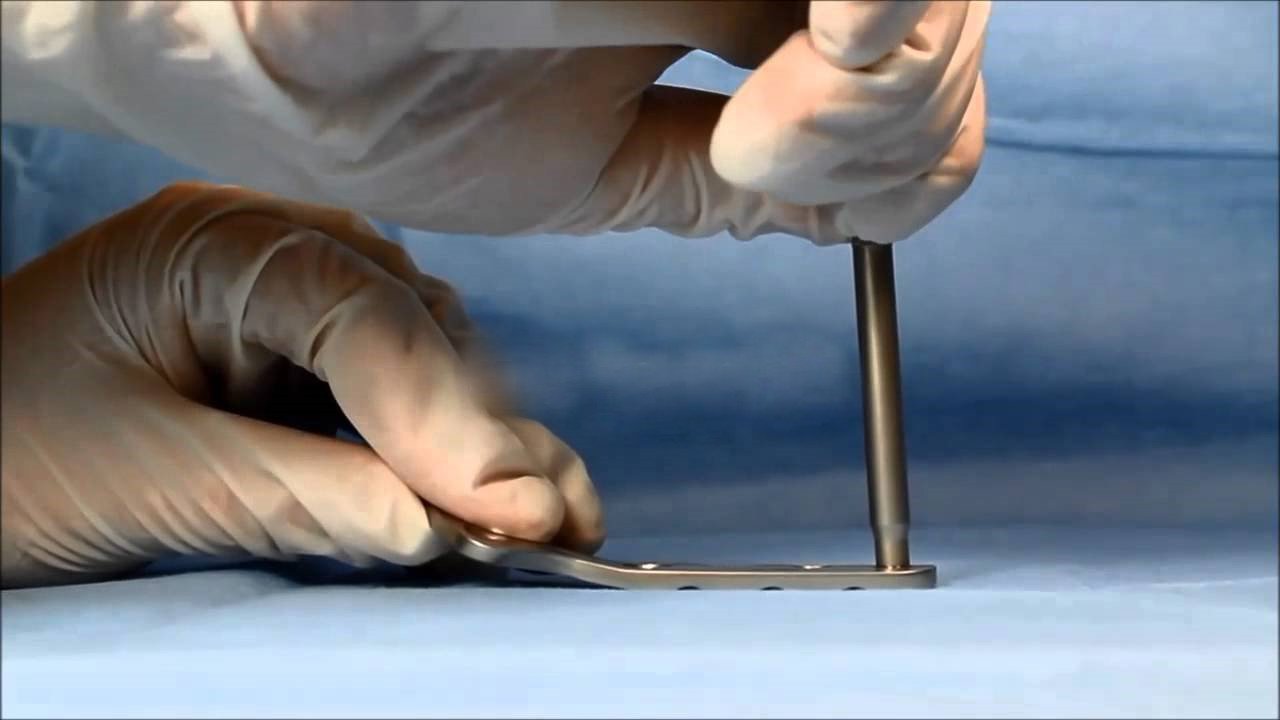Successful use of a bone plate relies on the properties of the plate, the bone screws, the bone and on the accurate application of biomechanical principles. Here are the general plates fixation principles you must know.
Plate related factors
The strength of a plate relies on its cross-sections; thickness is the most significant contributing factor. The strength differs with the cube of the thickness. However, it is important to use a material of suitable strength and stiffness which should be close to that of the bone. The titanium’s stiffness is closer to that of bone, while stainless steel is stiffer than titanium. Very stiff bone plates can make the bone weak after fracture healing. The plate’s contact surface is also a significant factor. The conventional plate’s surface causes reduction of blood supply under the plate, resulting in immediate post-fixation osteoporosis.
In the new design featuring decreased contact self-compressing plate to lessen contact surface, substantial material is removed from the plate’s undersurface between the holes, giving it an arched appearance. A conventional orthopedic plate is weak at the screw holes. The excavation lessens the stiffness of the plate to the similar level as of the screw hole area. The bone plate with this design now has even stiffness in both the areas. Such a plate may be bent in a constant curvature with a good fit of the screw head in the plate hole and still preserve the mechanical features that consistently distribute bending as well as torsional stresses over a long distance along the plate.
The fatigue life of plate is prolonged because its holes are protected from localized high stresses. The holes of plate are symmetrical, consistently distributed along the plate, and have oblique undercuts on the plate’s lower side. This undercut enables unhindered inclination of a lag screw up to 40? longitudinally, as well as 7? in the transverse plane, in both directions through the plate. Usage of a shaft screw as a lag screw through the plate in position of a fully threaded cortical screw provides superior static compression force. The plate’s even distribution holes allow the adjustment of the place of the plate or for the replacement of the plate for a longer plate without conflicting with any previously drilled holes.
The plate’s length is another important factor. A too short plate can make a construct unstable, while application of a very long plate can cause needless damage to the soft tissue.
Screw related factors
The bone screws fasten a plate to the bone. The effectiveness of a screw largely depends on the design of its head. Well-made threads are easy to insert and hold well in all conditions. A well-designed slot for the screwdriver’s placement ensures ease of screw insertion. Suitable number of screws is necessary to hold the plate. A minimum of 2 in each fragment are essential to prevent rotation. The total number of screws required for plates fixation relies on the site and kind of fracture. The ratio of the pilot hole to screw’s depth depends on this ratio. Strength of the plates fixation relies on turn on the holding power of the bone screws. It is important to use strong material to make screws that can withstand heavy loads. Plates and screws should be of the same material to diminish corrosion.
The success of bone plates fixation relies on:
- Plate thickness, geometry, dimensions, material used
- Screw design, number, material, and hold in the bone
- Bone-mechanical properties as well as the health of the bone
- Construct- direction of load and placement of plate
- Compression between the fragments
Bone related factors
The health of the bone is a factor which healthcare service providers often overlook while fixing a fracture. A young bone is dense in consistency and a screw holds good in such a bone. As the holding power of a screw is dependent on the elastic force offered by the bone, it’s obvious that the denser the bone, the stronger the hold. In the elderly people, the bone is porotic, being less dense than young bone. The holding elasticity of porotic bone is a lower magnitude as well as leads to inferior screw hold. Therefore, the mechanical properties of bone and health are of importance in this context.
The bone’s interaction and the plate are important, since the 2 are combined in a composite structure that becomes a vital entity in the strength of a fixation. The strength of a plate-bone construct is its capability to withstand load without structural failure. However, we can describe this entity as a torsional strength or a bending strength, depending on the load application. An orthopedic plate is a load sharing device. Loads may transmit between plate as well as bone through the bone screws and through friction kind of forces between the plate surface and the bone. The plate supports some of the load and some load passes between the fragments of bone. The reconstructed bone must support a certain load.







